Charlie J. Garcia passed away comfortably on 11/19/21 at age 91 surrounded by his caring family members. There is a celebration of his life on Saturday, November 5, 2022 in Hilo, HI. The High Altitude Observatory (HAO) at National Center for Atmospheric Research (NCAR) would like to honor Charlie’s life with the following photographic highlights from his long career as the Mauna Loa Chief Observer.
Charlie standing next to the bottom of the Mk3 instrument.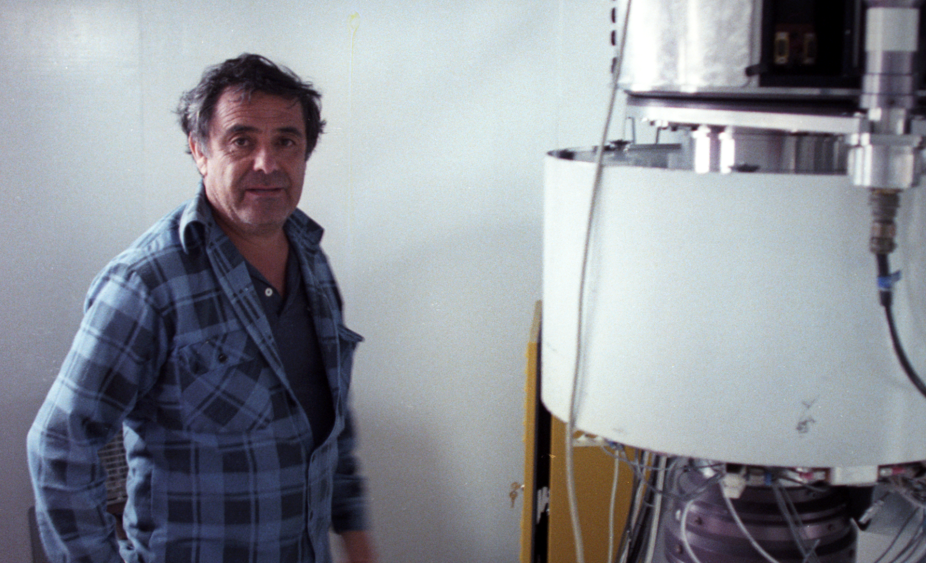
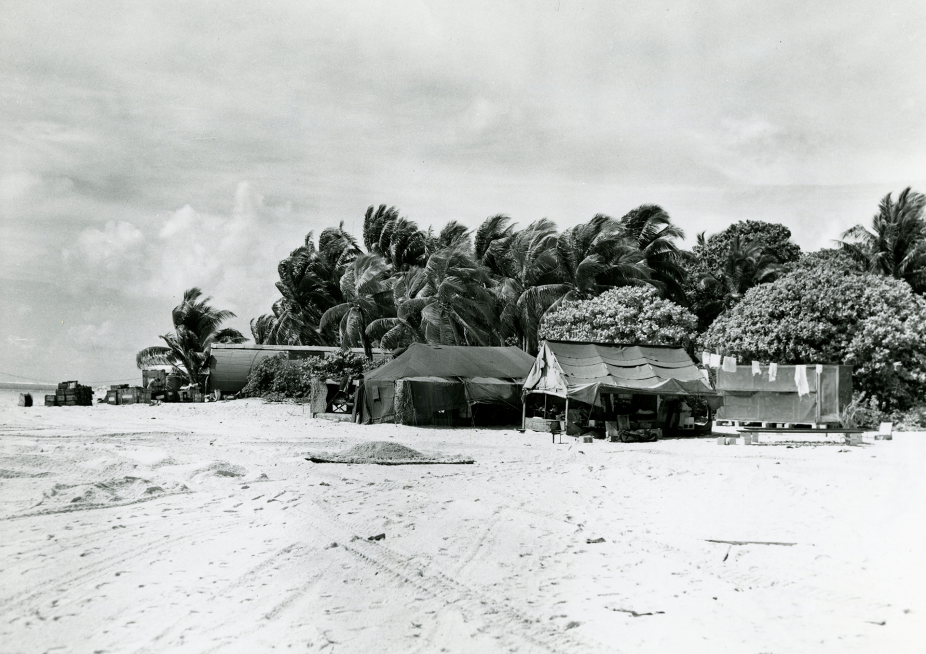
HAO eclipse expedition camp at Pukapuka on Danger Island in the Cook Islands 1958
Charlie Garcia dedicated his career to the pursuit of science and to helping advance our understanding of the dynamics of the Sun’s atmosphere. Charlie was an electrical engineer, a solar observer, and a dedicated scientist. He began his career in 1955 at HAO in Climax Colorado working on solar instruments. He was a member of three HAO solar eclipse expeditions traveling with instruments to: Pukapuka in the Cook Islands in 1958; the Canary Islands in 1959; and to New Guinea in 1962. Charlie’s advanced skills at fixing instrumentation made him a valuable eclipse team member.
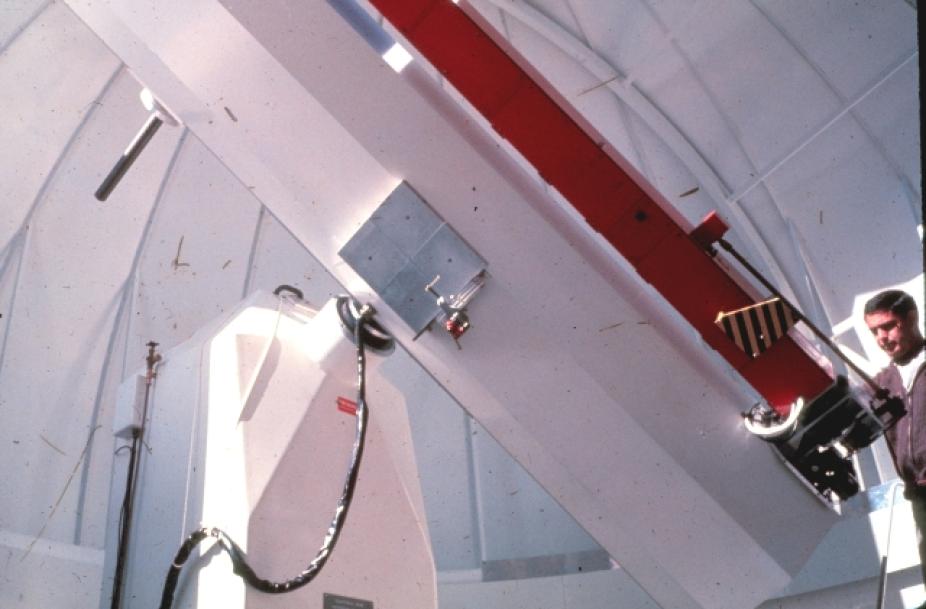
Charlie operating the coronameter in 1964
In 1963 Charlie helped HAO move the solar instruments from Climax, CO to Maui, Hawaii to take advantage of better sky conditions needed to observe the Sun’s corona. HAO's coronameter was installed on Maui at Haleakala. The coronameter was designed and built by HAO and was the first instrument to create an artificial solar eclipse in white light. This allowed HAO to provide daily observations of the Sun’s corona. The 1964 photograph shows Charlie operating the coronameter.
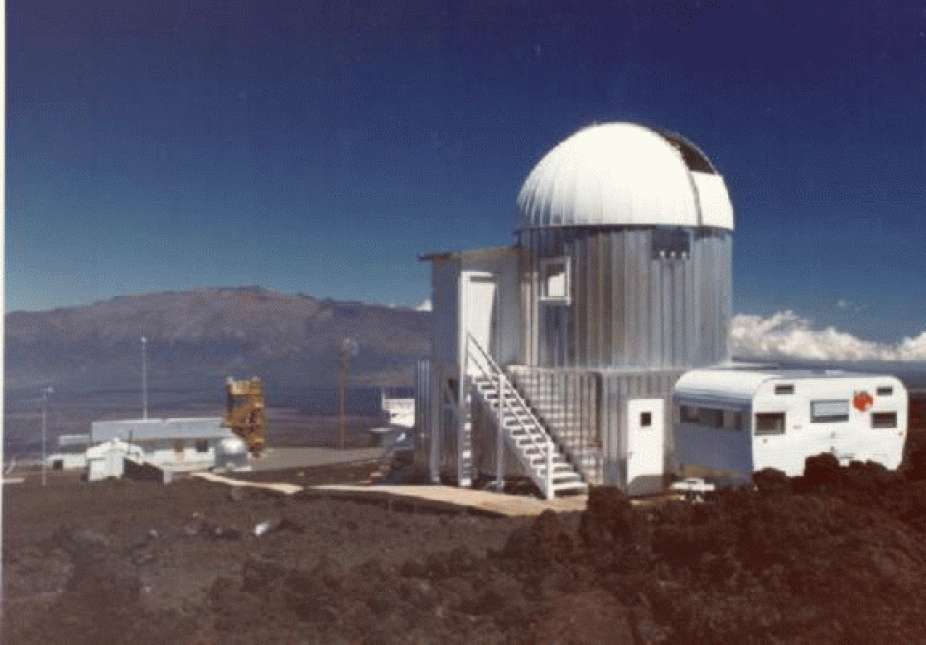
The coronameter was moved in 1965 to the newly built Mauna Loa Solar Observatory located on the Big Island at 11,200 feet.
The coronameter was moved again in 1965 to the newly built Mauna Loa Solar Observatory located on the Big Island at 11,200 feet. Then in 1967 a second, improved coronameter was installed there. Charlie and HAO scientist Dick Hansen worked together to study changes in the Sun’s corona. In 1970 they observed the first observation of a solar eruption known as a Coronal Mass Ejection (CME) and published their results in 1971. Months later the first images of a CME were seen from space by the OSO-7 satellite. CMEs are now known to be a major cause of ‘space weather’ at Earth and throughout the solar system and are a large part of NASA's studies of the Sun.
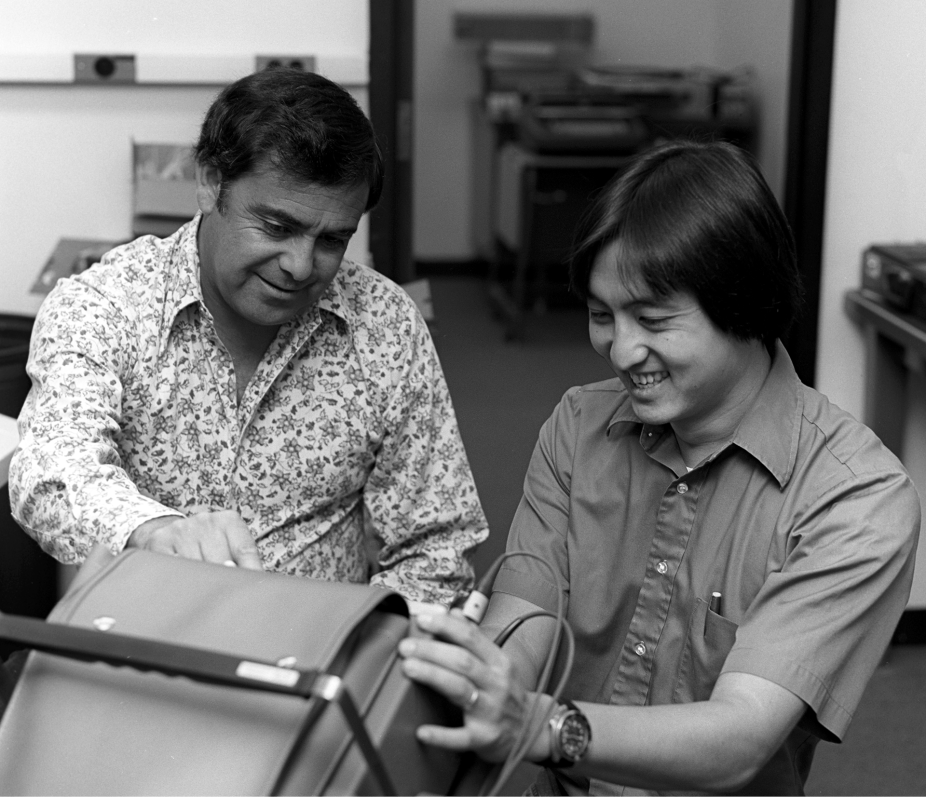
Charlie and Eric worked together observing the Sun for nearly 20 years.
In 1972 Charlie gained a valuable colleague when Eric Yasuakwa joined the Mauna Loa team. Charlie and Eric worked together observing the Sun for nearly 20 years. Charlie and Eric are shown in the photo.
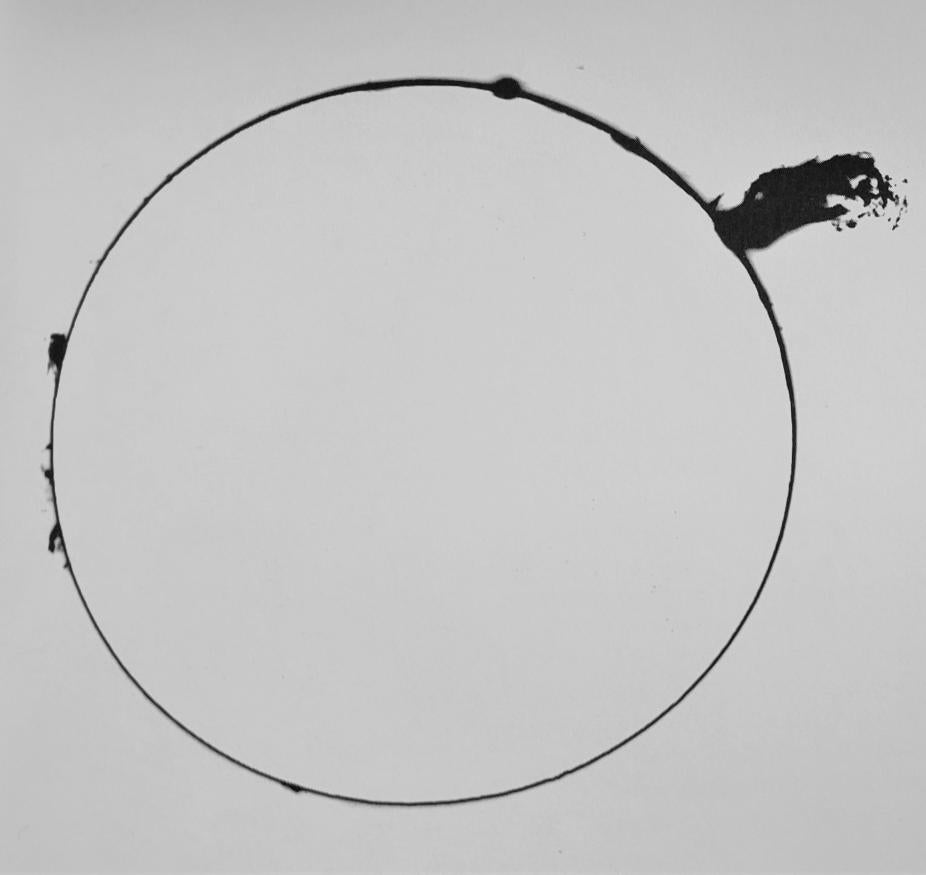
Charlie took this picture of a very large prominence erupting on the Sun, October 28, 1972.
On October 28, 1972 Charlie observed a very large prominence erupting on the Sun. Prominences are large dense structures that are part of the massive events known as Coronal Mass Ejections. Charlie took many pictures of the eruption including the one shown here. These events are gigantic. The Earth would be a small dot in this picture. Eric Yasukawa still remembers this as Charlie’s birthday solar event. In 1973 a new HAO coronagraph was launched on the Skylab space station. Charlie and Eric’s observations from Mauna Loa helped scientists to better understand the new observations of solar eruptions taken from Skylab.
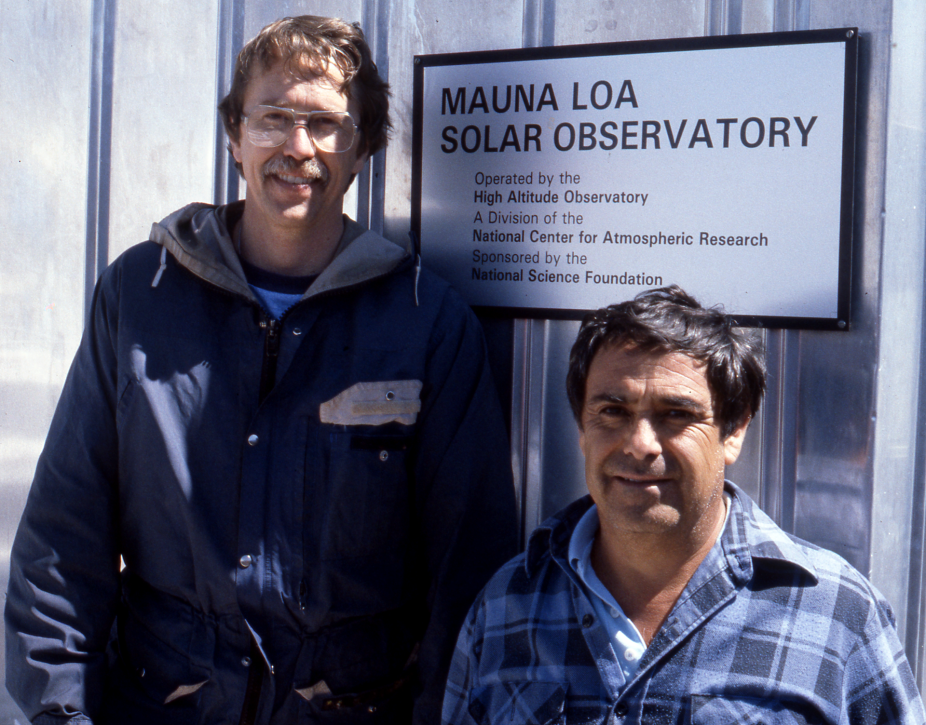
Dick Fisher and Charlie Garcia posing in front of MLSO sign at the MLSO Observatory building.
Later, in 1979, HAO built a new coronameter called the Mk3 replacing an older instrument at Mauna Loa. Charlie helped install, maintain, and observe with the Mk3 for the remainder of his career. Because of the Mk3 installation Mauna Loa needed to hire more staff. At this time Dick Fisher became the lead scientist and Charlie became the manager and chief observer.
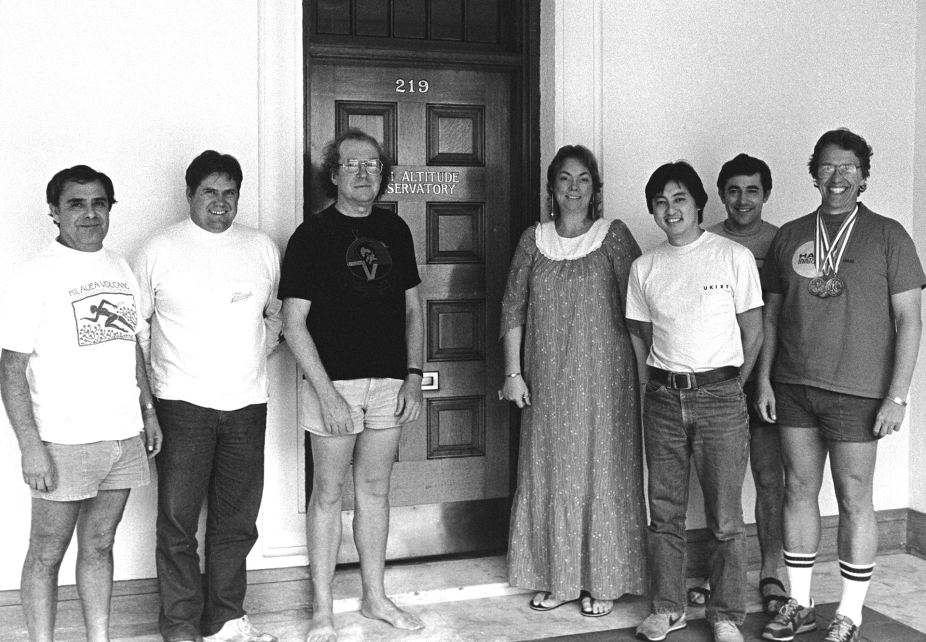
Mauna Loa staff: Charlie Garcia, Ed Lundin, Paul Seagraves, Cheryl Baker, Eric Yasukawa, David Sime, and Dick Fisher.
The staff members used the new Mk3 data to support the new HAO space mission known as the Solar Maximum Mission (SMM).
Mauna Loa erupts on March 25 to April 15, 1984.
On March 25, 1984 Mauna Loa experienced a significant eruption. Eric Yasukawa was on site along with Dick Fisher and Kristi Rock. They noted the eruption in their logs and after an hour recorded that Pele’s hair was covering the parking area so they were ‘abandoning ship’. Soon after leaving, part of the road was destroyed by the lava but the buildings were unharmed. Charlie and the Mauna Loa staff, along with some of the HAO engineers, were able to get to the site in late April to restore power and get the equipment working again. Working on Mauna Loa has never been boring.
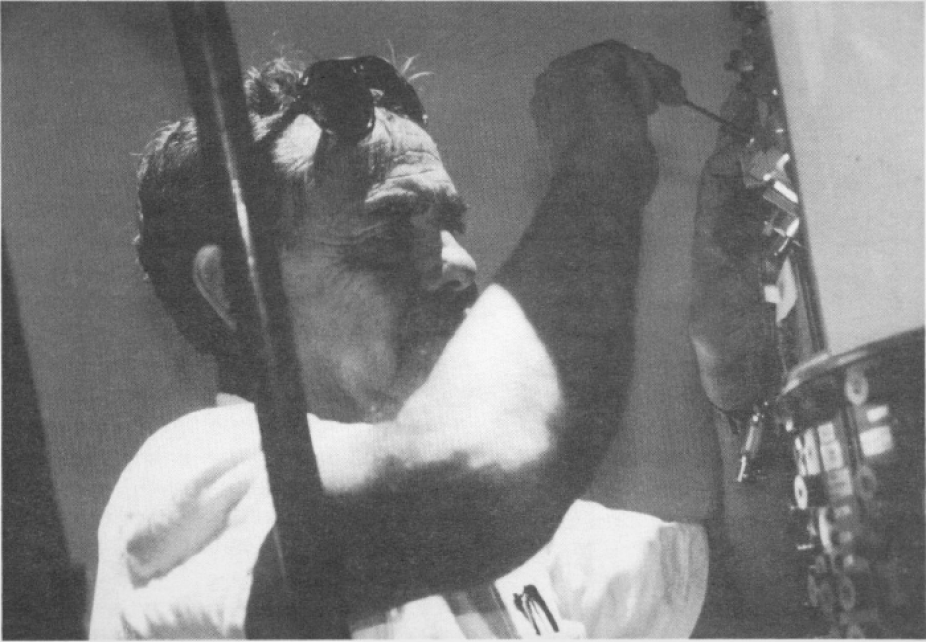
Charlie working on the Mk3 coronameter.
For nearly 30 years Charlie made the 90-minute drive from Hilo up to the remote Mauna Loa Observatory site located at 11,200 feet on the northern flank of Mauna Loa. The last 30+ minutes of the drive were on a single-lane crushed lava road with no grading and limited visibility.
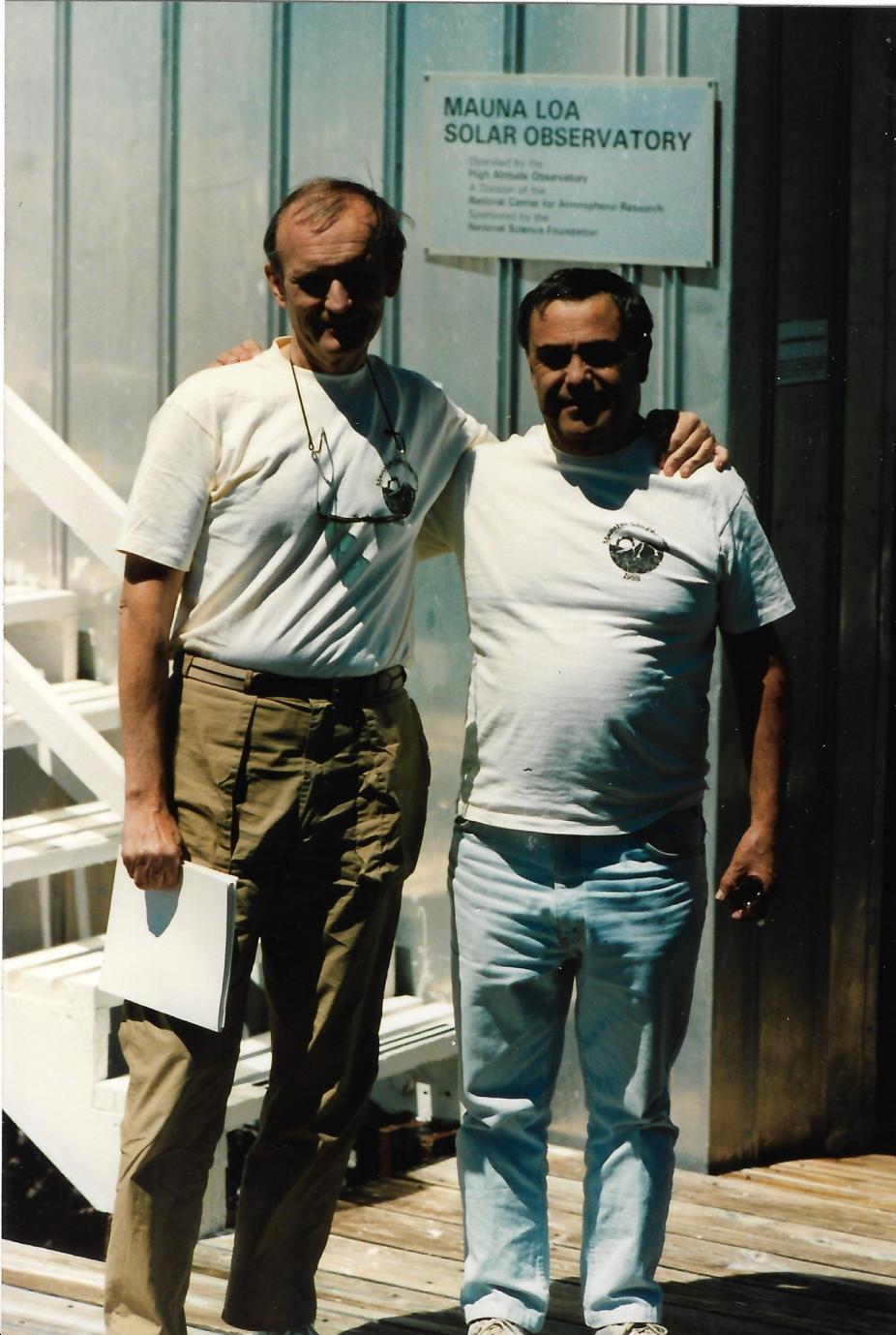
Charlie is visited by the NCAR Director Bob Serafin.
In the early 1990s Charlie welcomed the NCAR Director Bob Serafin to the site to see the beautiful observations firsthand.
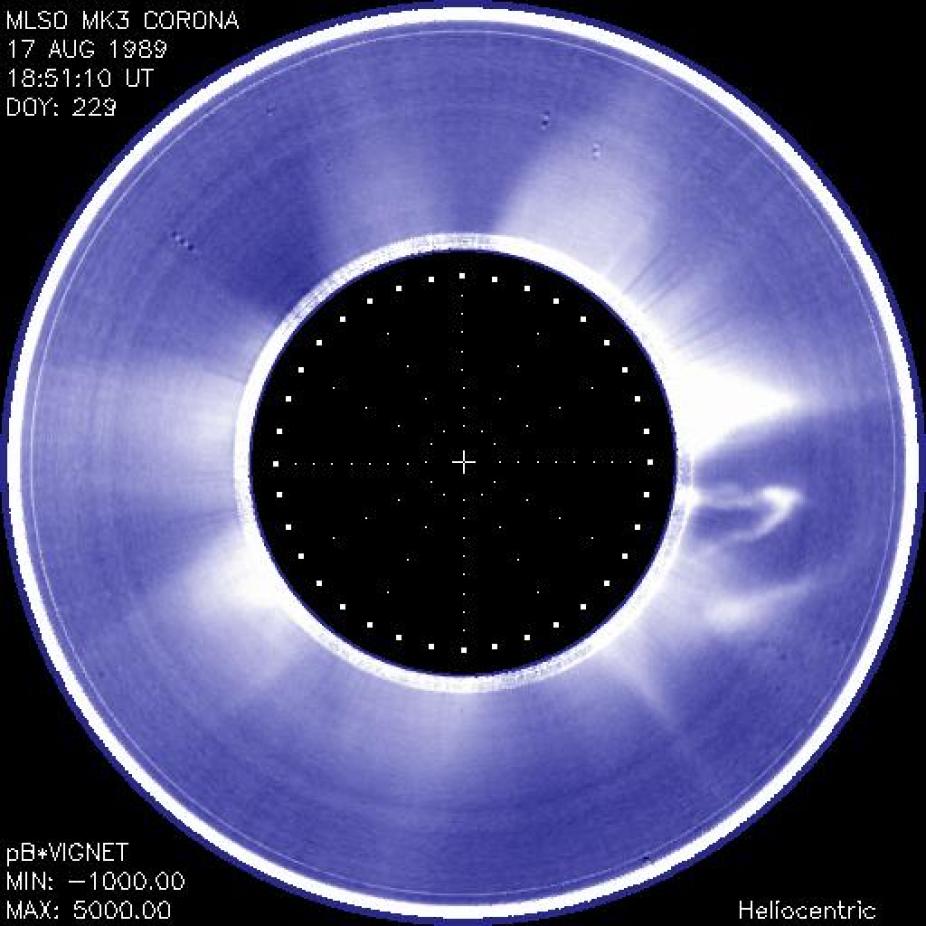
Mk3 image of a CME on Aug 17, 1989.
Charlie retired in 1993 dedicating his career to keeping the Mk3 instrument running and collecting important observations. He published numerous papers, reports, and technical notes on a variety of topics including solar activity, the role of the Sun’s magnetic field in shaping the corona, solar instrumentation, and sky conditions at Mauna Loa. His dedication, expertise, and tireless efforts to obtain the highest quality solar observations were a major part of HAO’s success. His legacy continues with the new generation of Mauna Loa observers led by Ben Berkey.
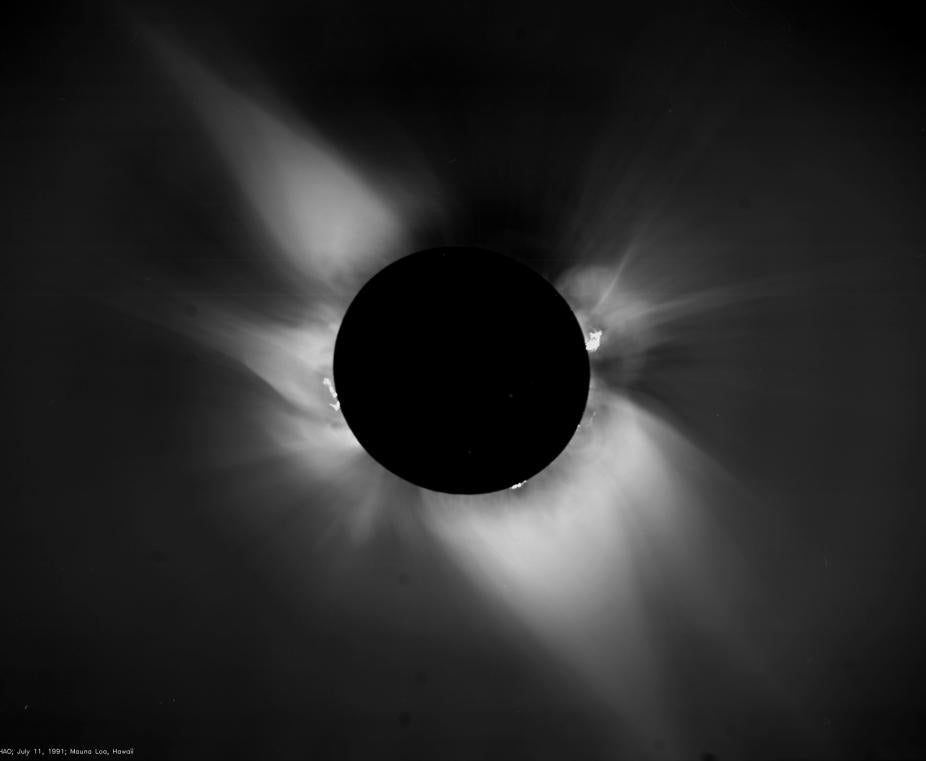
Total solar eclipse 1991 taken at Mauna Loa by HAO team, which included Charlie Garcia.
Nearly 30 years had passed since Charlie had been part of an HAO eclipse expedition but, fittingly, in July 1991 the total eclipse came to Charlie's doorstep, passing right over Mauna Loa. This was an extremely rare event and one that Charlie and many would never forget!
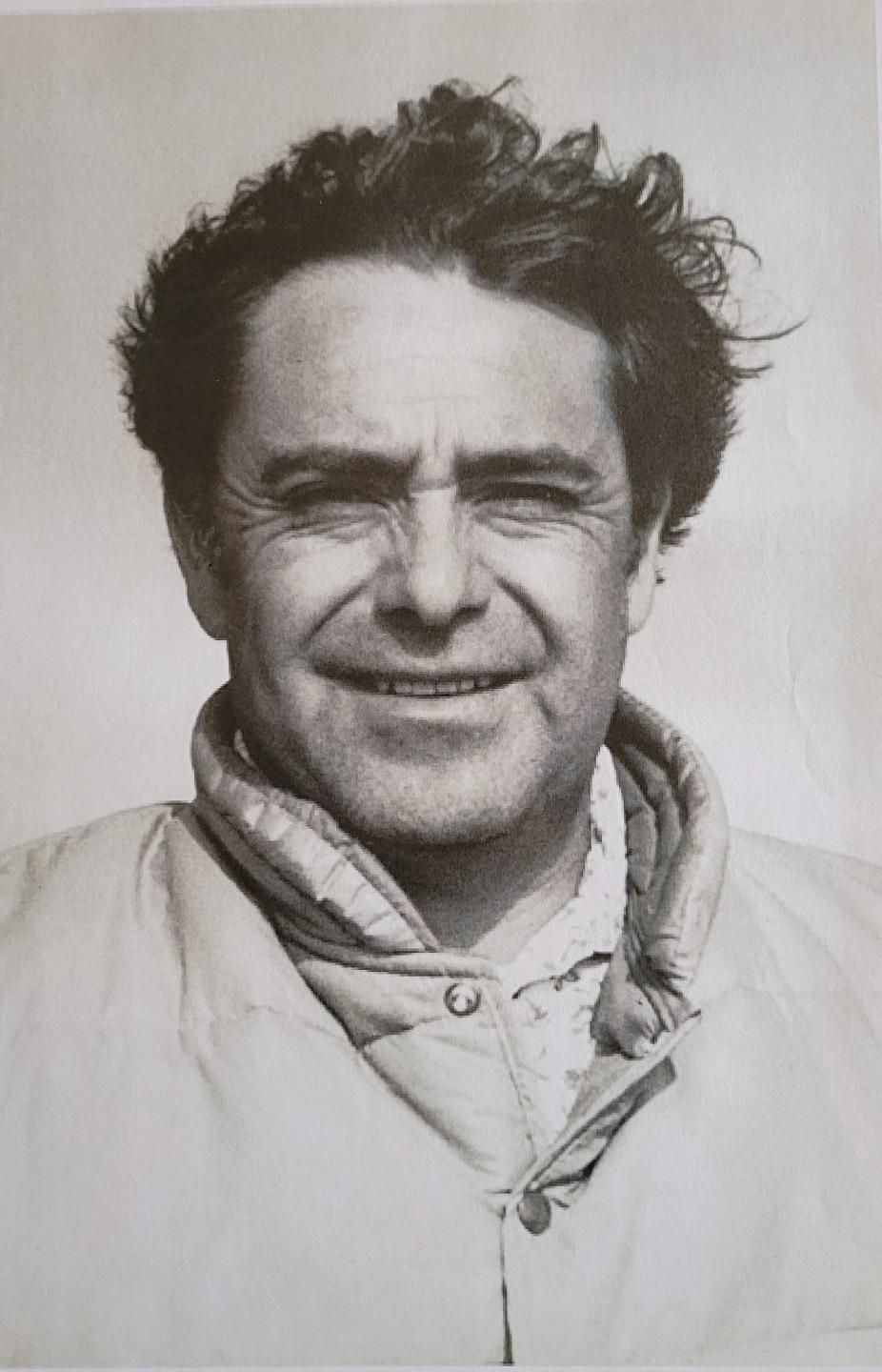
Charlie outdoors at Mauna Loa with windswept hair.